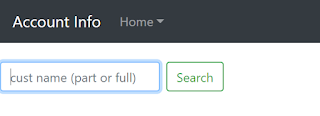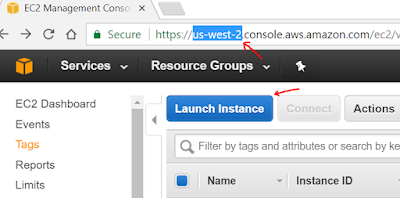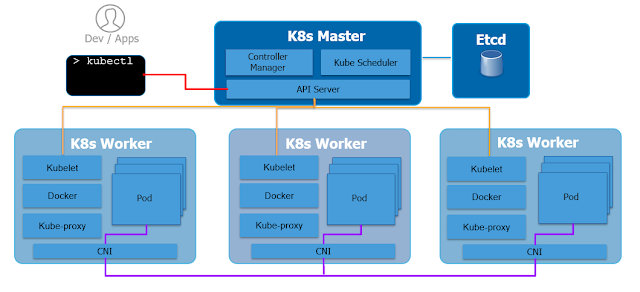SEA Piper personal projects - I
Back in January we carried out the workshop elements of the Pied Piper program for the South East Asia team in Singapore. At the end of that we announced a competition where each team member had to come up a project using all the knowledge acquired during the workshops. The Fast forward 6 weeks and we have just completed the project reviews. The results? Arguably the best Pied Piper wave to date. A total of 21 projects, great variety of ideas very nicely executed and presented.
Firstly we saw a few environment monitors with sensors on the Raspberry PI. Most of these solutions use Redis from the Pivotal Web Services Marketplace to store the sensor values with a web app running on Cloud Foundry acting as the frontend. This means that the data can be accessed from a smartphone anywhere in the world.
Inspired by what appears to be a common problem in Bangkok, Sutthisak worked on a prototype for a parking management solution which is able to report whether parking spots are available or not. For that purpose he used an ultrasonic sensor in such a way that the measured distance gets smaller when a car parks over it. The status gets updated on a Redis database and the web app running in Cloud Foundry displays the new status for that spot. Sutthisak wants to enhance the solution with an online booking system.
Sin Lip came up with a very different solution. He built a very nice home intrusion detection system capable of streaming video from a Raspberry PI camera to an web app running in Cloud Foundry. He demonstrated the use of CSS by leveraging Bootstrap. Also an ultrasonic sensor detects sudden drops in distance and registers the intrusion events in a Redis database in PWS. He also built a casing for his project with Lego. A very solid project throughout.
Akif took a pragmatic approach from the very beginning as he spotted an opportunity to change a business process he is involved in. Basically the allocation of team members to the various accounts in his territory is not uniform and finding out who is responsible for what on a given account is a challenge. Until a few weeks back Akif himself had the responsibility to maintain an Excel sheet and used to get phone calls every day by the various sales teams. With the knowledge acquired through the program he built an app and pushed it to Cloud Foundry which offers a search capability. He is no longer consulted directly but he has built ways for him to find out how his users interact with the app. He keeps track of what people are searching and he uses a 7-segment display attached to his Raspberry PI to keep track of the hits the app gets. In an effort to learn more Akif integrated his app with three different databases (Redis, MongoDB and PostgreSQL), all from PWS Marketplace.
Kiat-Wee found inspiration for his great project in the private tuition market in Singapore. It is very common for families to send their children to augmentation classes to help them achieve better scores. However these can be very costly and are out of reach for the poorest families. With that in mind Kiat-Wee built an operational prototype for a digital maths tuition engine. A web app running in PWS makes use of ECS storage and a Redis database to present questions to the student.
Then, the Raspberry PI has two buttons to select whether the question is true or false. Student choices flow all the way to the Redis database in the cloud by leveraging the RabbitMQ service in PWS configured as an MQTT broker. Ideas like these could spark a team project where the SEA Pipers work together to contribute to the Community while enhancing their skills and deepening their understanding of what it takes our customers to perform their digital transformation.
For his project, Bernard turned his attention to one of DellEMC's fastest growing products ScaleIO. He strived to reduce storage provisioning to "pressing a button" ... literally. To start with, he deployed a 3 node ScaleIO cluster with Vagrant. Then he went on to implement his own self-service interface including user authentication together with a quota management system of his own creation by making heavy use of ScaleIO's Rest API. The frontend was arguably the most elaborated comprehensive out of all projects. Once the application owners place their request through the web app running in Cloud Foundry the storage admin triggers the actual storage provisioning by pressing the button on the Raspberry PI.
Bernard's project was one of the best projects overall and is the clear winner in the automation category which is a key element of the IT transformation and one of the major focus areas of the Pied Piper program.
Yoke-Meng built an elaborated story around Star Wars where Pied Pipers join forces with the rebels (it feels great not to be on the dark side for once) to defeat the evil Empire. She built a web app backed by both Redis and MongoDB databases. She used two analog sensors simultaneously through an ADC (Analog to Digital Converter) as the Raspberry PI doesn't provide analog pins natively. She augmented the information provided by the app with calls to two different external Rest APIs and photos retrieved from ECS ... and of course if you are wondering about the outcome of the story .... indeed, the expertise provided by the Pied Pipers ensures the Empire gets defeated in the end.
Xiaoyin's project scored very high despite having less sensors at his disposal as the kit we use for the training cannot be acquired in China. So his Raspberry PI setup only had 3 elements but he augmented it nicely with other tools at his disposal from the Wechat ecosystem. For his project he focused in one of his passions, "the smart home".
We created a Wechat account and after adding him as a friend we were able to play music and drive the colour of an RGB LED attached to his Raspberry PI in his home in Shanghai. The app provided access to a chatbot. Finally the integration with ECS allowed him to store in ECS any photos I would send him through Wechat. The web portion of his solution run in Cloud Foundry and provided a view into the status of the LED and the temperature and humidity sensor.
If by reading this article you have come to the conclusion that the SEA team have done great projects, wait! because that's not all! You will learn about the six finalists in the next post.
Firstly we saw a few environment monitors with sensors on the Raspberry PI. Most of these solutions use Redis from the Pivotal Web Services Marketplace to store the sensor values with a web app running on Cloud Foundry acting as the frontend. This means that the data can be accessed from a smartphone anywhere in the world.
Inspired by what appears to be a common problem in Bangkok, Sutthisak worked on a prototype for a parking management solution which is able to report whether parking spots are available or not. For that purpose he used an ultrasonic sensor in such a way that the measured distance gets smaller when a car parks over it. The status gets updated on a Redis database and the web app running in Cloud Foundry displays the new status for that spot. Sutthisak wants to enhance the solution with an online booking system.
Sin Lip came up with a very different solution. He built a very nice home intrusion detection system capable of streaming video from a Raspberry PI camera to an web app running in Cloud Foundry. He demonstrated the use of CSS by leveraging Bootstrap. Also an ultrasonic sensor detects sudden drops in distance and registers the intrusion events in a Redis database in PWS. He also built a casing for his project with Lego. A very solid project throughout.
Akif took a pragmatic approach from the very beginning as he spotted an opportunity to change a business process he is involved in. Basically the allocation of team members to the various accounts in his territory is not uniform and finding out who is responsible for what on a given account is a challenge. Until a few weeks back Akif himself had the responsibility to maintain an Excel sheet and used to get phone calls every day by the various sales teams. With the knowledge acquired through the program he built an app and pushed it to Cloud Foundry which offers a search capability. He is no longer consulted directly but he has built ways for him to find out how his users interact with the app. He keeps track of what people are searching and he uses a 7-segment display attached to his Raspberry PI to keep track of the hits the app gets. In an effort to learn more Akif integrated his app with three different databases (Redis, MongoDB and PostgreSQL), all from PWS Marketplace.
Kiat-Wee found inspiration for his great project in the private tuition market in Singapore. It is very common for families to send their children to augmentation classes to help them achieve better scores. However these can be very costly and are out of reach for the poorest families. With that in mind Kiat-Wee built an operational prototype for a digital maths tuition engine. A web app running in PWS makes use of ECS storage and a Redis database to present questions to the student.
For his project, Bernard turned his attention to one of DellEMC's fastest growing products ScaleIO. He strived to reduce storage provisioning to "pressing a button" ... literally. To start with, he deployed a 3 node ScaleIO cluster with Vagrant. Then he went on to implement his own self-service interface including user authentication together with a quota management system of his own creation by making heavy use of ScaleIO's Rest API. The frontend was arguably the most elaborated comprehensive out of all projects. Once the application owners place their request through the web app running in Cloud Foundry the storage admin triggers the actual storage provisioning by pressing the button on the Raspberry PI.
Bernard's project was one of the best projects overall and is the clear winner in the automation category which is a key element of the IT transformation and one of the major focus areas of the Pied Piper program.
Yoke-Meng built an elaborated story around Star Wars where Pied Pipers join forces with the rebels (it feels great not to be on the dark side for once) to defeat the evil Empire. She built a web app backed by both Redis and MongoDB databases. She used two analog sensors simultaneously through an ADC (Analog to Digital Converter) as the Raspberry PI doesn't provide analog pins natively. She augmented the information provided by the app with calls to two different external Rest APIs and photos retrieved from ECS ... and of course if you are wondering about the outcome of the story .... indeed, the expertise provided by the Pied Pipers ensures the Empire gets defeated in the end.
Xiaoyin's project scored very high despite having less sensors at his disposal as the kit we use for the training cannot be acquired in China. So his Raspberry PI setup only had 3 elements but he augmented it nicely with other tools at his disposal from the Wechat ecosystem. For his project he focused in one of his passions, "the smart home".
We created a Wechat account and after adding him as a friend we were able to play music and drive the colour of an RGB LED attached to his Raspberry PI in his home in Shanghai. The app provided access to a chatbot. Finally the integration with ECS allowed him to store in ECS any photos I would send him through Wechat. The web portion of his solution run in Cloud Foundry and provided a view into the status of the LED and the temperature and humidity sensor.
If by reading this article you have come to the conclusion that the SEA team have done great projects, wait! because that's not all! You will learn about the six finalists in the next post.












Comments
Post a Comment